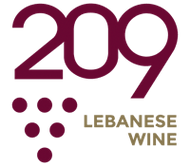209 Hot Stories
Batroun: a City of Wines Rich in Taste and Lebanese Excellence
As far as summer goes, Batroun has become the hottest hub for tourism in Lebanon! The rich atmosphere cannot be missed, amidst the vibrant landscapes and exciting nature. Whether you’re...
Heading to your first wine-tasting? Here’s how to make the most of it
Wine-tasting events can be very enjoyable, especially if they’re experienced with good company. To make the most of a wine-tasting event, there are a number of things to be mindful...
Notes and Impressions from a VINIFEST 2017 visitor
Interesting show. Several good surprises, some of which can even be called amazing. Overall Lebanese wine quality still on an upward trend. Lebanese Wine discovery: Chateau Marsyas red 2012: Amazing....
Where do wine aromas come from?
Wine drinking is a multidimensional experience, and is savored by all our senses. The ability to identify the subtlest of flavors and aromas takes a bit of practice but only...
This is how you can store wine!
Wine drinking is a common activity that isn’t limited to occasions. It has become a pleasure in itself, or a means to bring people together, celebrate, or unwind at the...
On Lebanese Wine…Q&A with Mr. Zafer Chaoui, UVL President
1- What, in your opinion, is one thing that truly distinguishes Lebanese wine? The exceptional weather permits for the Lebanese wineries to produce natural wine with almost no use of...






